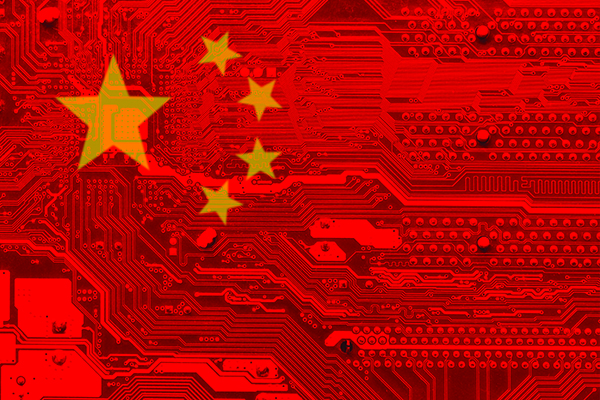
China’s transition to a new innovation powerhouse will herald a critical role of Chinese companies in the world’s digital/tech M&A.
According to new research from global law firm Freshfields Bruckhaus Deringer (Freshfields), spending on digital and technology M&A globally has increased dramatically over the last five years, reaching a new high of $258 billion in 2017, while deal volumes have remained steady.
Companies from China do more digital M&A deals than those from any other country, and Chinese companies also spend more on each deal than companies headquartered elsewhere. The study revealed that Chinese companies spent an average of $14.7 billion per deal, followed by those from the US ($1.26 billion).
Digital M&A activity by private-held or state-owned companies fell outside the scope of the study. In the case of China, this activity is significant and if it was included, China’s figures would be expected to be higher still. Many Chinese companies are also listed on US exchanges and would be identified as US companies in the data.
As we are seeing a robust wave of global digital M&A where Chinese companies are taking the lead, we invite the Vice President Tong Fu from JD Digits Group and General Counsel Yunpeng Su from Tsinghua Tongfang Co. Ltd., both were “outside the scope of the study” but representing China’s emerging forces in the world’s digital M&A arena.
Global digital strategy
Freshfields summarized three principal rationales in the study for digital/tech M&A, such as to further the acquirer’s digital transformation, bolster its technology offering or consolidate the market in a particular class of tech.
Many companies see M&A as the best-or at least the fastest-way to build their digital capabilities. All the M&A deals announced by the current constituents of the S&P Global 1200 between 1 January 2009 and 31 December 2017, 3,955 transactions were identified as ‘digital/tech’, taking up 14.8% of the total. In the meantime, big businesses are now more willing than ever to pay large sums for digital and technology assets.
JD Digits Group is devoted to link finance and enterprises with digital technology. It upgraded its branding in 2018 and adjusted its business scope from fintech to digital tech that is heavily upon the advanced technology such as big data, artificial intelligence, Internet of Things, and blockchain, etc. to facilitate the informatization, digitalization and intelligentialization of the industry and the economic progress in today’s world that science and technology enable a better future.
All JD Digits investments and M&A are aligned with the Group’s strategic development to ensure the best synergies. “We keep close watch on the innovations and high-tech companies in Silicon Valley, Israel and other regions, focusing on AI, big data, Internet of things, etc. We are expanding our global footprint to grow our businesses,” Fu tells ALB.
Tsinghua Tongfang Co., Ltd. is a high-tech listed company founded by Tsinghua University. It positions itself as a pluralistic and comprehensive science and technology industry incubator which is devoted to the transformation and industrialization of Chinese high-tech achievements. At present, Tongfang owns backbone industrial clusters which are closely linked to national economy and people’s livelihood, and has established science parks capable of global production and R&D.
“Many companies are speeding up their transition to better adapt to China’s digital economy. We expect to enhance our digital transformation by global digital/tech M&A. Tongfang’s IT global layout is well developed with regional R&D centers and networking marketing entities in UK, U.S. and Germany, with manufacture centers in U.S. and Mexico. We also work closely with high-tech companies in U.S. and in Europe to jointly conduct research to promote the digitalization,” Su tells ALB.
Regulatory risks
Fu observed that the overseas M&A by Chinese companies in the recent years have become more rational and market oriented, with deal value and professionalism on the increase. As a recent report indicated that, certain factors including Belt & Road Initiative (BRI) resulted in China’s overseas investment drop in 2017, the global digital M&A by Chinese companies kept good momentum in 2018.
Su tells ALB that BRI helps Chinese companies expanding their footprint in the global market, and more Chinese companies are encouraged to “going global”. Chinese companies can get many benefits from joint cooperation with international advanced high-tech companies via global digital/tech M&A transactions.
While embracing the opportunities, the two GCs also remind that regulation is becoming more complicated and challenging around global digital/tech M&A for Chinese companies.
On Nov 1, 2018, the U.S. Department of Justice announced “China Initiative” with the objective of countering perceived national security threats to the United States from China. The Initiative promises to investigate and prosecute Chinese companies aggressively for alleged trade secret theft, economic espionage, Foreign Corrupt Practices Act offenses and other violations of U.S. law.
The U.S. Department of Commerce’s Bureau of Industry and Security (BIS) issued an advanced notice of proposed rulemaking on Nov. 19 seeking public comment on “criteria for identifying emerging technologies”, including artificial intelligence, machine learning technologies and a host of component and separate technologies, that are essential to U.S. national security and that may be included in possible future export control regulations. These developments promise to make the international investment landscape even more challenging and complex for Chinese companies.
BIS’s new move coincides with the research result by Freshfields. According to the research, US businesses are the most sought-after by the S&P 1200, with 1,805 US companies sold during the study period, followed by Japanese companies, 301 of which were sold, and UK ranked third.
“As Chinese outbound M&A activities have seen a quick increase both in volumes and in significance, governments in various countries tighten their grip on national security reviews and anti-trust review. Especially when the EU’s General Data Protection Regulation (GDPR) came into force in May 2018, outbound digital/tech M&A priorities evolved to focus on data compliance, data asset value, operation costs, etc.,” points out Fu.
Tongfang has established the branches and R&D production bases in over 20 countries and regions around the world and its technologies, products and services featuring “intelligently made in China” spread all over five continents and more than 170 countries and regions. In the past several years, Su led the team achieved many successful outbound digital/tech M&A transactions that helped bolster Tongfang’s competitiveness and further enhanced its innovations on technology including AI.
When it comes to M&A involving critical technology, how to assist the company to secure the transaction with maximized commercial success? As Chinese companies are the new forces in global digital/tech M&A, how to embrace all the business opportunities and how to achieve a seamless cooperation with law firms in the process? Su’s experiences shed some light on how to proactively assess relevant legal risks for Chinese companies amid today’s rigorous international regulatory landscape.
According to Su, the stringent international enforcement environment poses the biggest challenge for global digital/tech M&A activities, “From a buyer’s perspective, they tend to choose the M&A deals involving intellectual property as core assets or choose those industry-leading target companies. From local regulator’s perspective, they worry such technology transfer may result in a loss of competitiveness so they tend to block the possible acquisitions by Chinese companies over national security concerns. ”
“However, the improvement in negotiation tactics and the continued optimization of case solution help to reduce local regulators’ perceived threat over technology transfer. In the meantime, learn about the laws, rules and regulations that might affect what you do in the target countries. Together with law firms, study the feasibility of M&A under different scenarios in different jurisdictions, particularly in outbound digital/tech M&A,” Su points out.
Take the lead
Commenting on the findings of the research, Richard Bird, partner and head of Freshfields IP/commercial practice in Asia, said, “As home to China and Japan—two of the world’s most active markets—Asia is an increasingly important player in the digital M&A space, not only on the buy side but also as a source of investment targets. ”
The strength of Asia’s digital economy and the pace of Chinese companies to grow their international footprint are enhanced. The findings in the Freshfields study reiterate the importance of digitalization in today’s increasingly connected world and highlight the long-term potential returns that buyers expect to realize from assets such as semi-conductors, data or online platforms. This trend is particularly evident in Southeast Asia, where corporate (including many Chinese tech players) are increasingly taking minority stakes in digital and technology targets. Many of these companies may go public in the years ahead.
Fu adds that, “BATJ—which stands for Baidu, Alibaba, Tencent and JD.com—the four Internet giants will become the main force of outbound digital/tech M&A particularly for emerging digital business opportunities and advanced technology and will target the B&R countries and less from U.S. or EU under the impact of certain trade policies.
“It’s part of our strategy to bolster our technology offering by strategic investment and M&A with a focus on internet, data-enabled businesses, fintech, etc. In the meantime, we will continue to support our acquired companies to a further integration thus achieving the M&A synergy,” Fu adds.
Su notes that, China attaches great importance to digital economy by introducing many policies to facilitate the development of science and technology, and Chinese companies themselves improve their competitiveness a lot in the process. China’s transition to a new innovation powerhouse will herald a critical role of Chinese companies in the world’s digital/tech M&A.
“According to U.S. News 2019 Best Colleges Rankings, Tsinghua University tops computer science in the world, which shows that China is on track to be one of the major contributors to the world’s science and technology. We will stick to the path of the combination of production, teaching and research by relying on the research strength and the talent of Tsinghua University to contribute more high-tech products for the benefit of the industry,” Su tells ALB.
中资企业数字产业并购领军全球
中国正从制造大国迈向科技强国,可以预见未来中资企业将在全球科技领域扮演更加重要的角色。
据美国富而德律师事务所最新研究报告显示,近五年全球数字和科技产业并购交易量保持平稳,而并购交易金额大幅增加,2017年达至2580亿美元再创新高。
中国作为 世界上并购最活跃的市场之一,中资企业开展的数字产业并购交易总数超过其他任何国家,且单项交易的投资额也领先世界各国。据富而德研究结果显示,中国买家每项交易平均投资14.7亿美元,美国买家的投资额为12.6亿美元位居第二。
但本项研究未纳入私营或国有企业的数字产业并购,以中国为例此类企业的并购交易甚多,如果计算在内,中国的并购数据势必更高。另外,不少中资企业在美国上市,在统计数据中便被划入美国公司。
面对如此强劲的全球数字和科技产业并购浪潮,特别是中资企业在其中扮演的领军者角色,我们邀请到京东数字科技集团的副总裁傅彤和清华同方股份有限公司的总法律顾问苏云鹏,均是两家被富而德报告“未纳入”的私营和国企类别、但却代表着中资企业在全球数字产业并购市场的新兴力量。
数字化全球布局
富而德在报告开篇即对企业数字产业并购通常出于哪些考量做了归纳:加速企业数字化进程、夯实企业技术力量、或力求在市场某一技术领域做到极致。
数字产业并购对于很多企业来说,不是最佳的、也一定是最快的优化企业数字化能力的方式。根据标准普尔全球1200指数从2009年1月1日至2017年12月31日的数据来看,共计为26744个并购交易中,数字产业的技术类并购占到14.8%,数量达至3955件。与此同时,一个明显趋势是,大公司为数字和科技类资产支付高额对价的意愿正变得空前强烈。
京东数科是一家致力于运用数字科技连接金融和实体产业的企业,在科技赋能的当下,2018年京东数科成功完成了品牌升级,业务范围从金融科技转向数字科技,并以大数据、人工智能、物联网、区块链等前沿技术为核心,助力产业提升互联网化、数字化、智能化,推动实体经济发展。
对京东数科来说,服务公司战略发展、与公司战略发展产生协同效应,是其投资并购业务的重要使命。“我们关注硅谷、以色列等地区的创新和科技类企业,聚焦AI、大数据、物联网等领域;我们也着眼全球布局,将成熟业务拓展到海外市场。”傅彤告诉ALB。
同方股份是一家清华大学出资成立的高科技上市公司,定位于多元化综合性科技实业孵化器,致力于中国高科技成果的转化和产业化,旗下拥有若干与国计民生密切相关的主干产业集群,以及与产业配套的具全球化生产和研发能力的科技园区。
“我们注意到目前企业正在从信息化、互联网化逐步向数字化方向发展。因此,我们希望通过海外数字产业并购,加快产业数字化进程。清华同方IT产业在全球已有较好布局,在英国和德国有区域研发中心及网络营销实体,在美国加州也设有研发中心及美国地区总部。同时,美国德州和墨西哥也建立了生产制造中心。我们还与欧美高科技企业开展紧密合作,共同开展研发,促进公司数字产业的发展。”苏云鹏告诉ALB。
机会之下的监管挑战
在傅彤看来,近年来中国企业的境外并购不断趋于理性化和市场化,并购标的质量不断提高,交易操作也更为专业。从近期报告来看,受“一带一路”建设等因素影响,2017年中资企业对外投资规模有所下滑,2018年中资企业在全球数字产业并购市场上仍保持活跃。
苏云鹏告诉ALB,“一带一路”战略为中资企业对外投资开辟了更广阔的途径,企业可以积极响应号召“走出去”。通过全球数字产业并购的过程,增强与国外先进技术的合作,提升科技产业的技术含量。
两位总法在看到中资企业在全球数字产业并购领域机会的同时,也预见到了国际监管环境趋于复杂和严峻的挑战。
2018年11月1日,美国司法部启动了“中国行动计划”,明确计划目标是反制其所认为的中国对美国国家安全造成的威胁。根据计划,美国司法部将不遗余力对涉嫌盗取商业秘密、从事经济间谍活动、违反《美国反海外腐败法》及其他美国法律的中国公司展开积极调查并提起诉讼。
紧接着11月19日,美国商务部工业安全署又公布了拟制定的14类新兴和基础技术的出口管制清单,其中涉及人工智能和机器学习技术、先进计算技术、数据分析技术等领域,中资企业海外并购的国际环境日趋严峻,政策风险不容忽视。
以上与富而德此次研究分析的结果相吻合。在此次研究涉及的时期内,美国数字和科技行业公司最受标准普尔全球1200指数买家的追捧,共有1805家美国公司被收购,排名第二的是日本公司,有301家被收购,英国公司被收购总数位列第三。
“随着中资企业影响力的不断提升,交易规模屡创新高,交易也逐渐受到投资目标地政府的关注,反垄断审查、国家安全审查等风险不断加大。特别是今年5月,通用数据保护条例正式生效,海外并购标的的数据合规、数据资产价值和运营成本都将成为收购数据类企业的核心考虑因素。”傅彤指出。
同方已在全球二十余个国家和地区设立了分支机构和研发生产基地,源于“中国智造”的技术、产品和服务遍及五大洲170多个国家和地区。结合科技、人工智能的创新,响应“一带一路”的发展战略,通过在海外并购优质资产提升企业竞争力,是苏云鹏带领同方法务团队这些年一直在做的工作。
而过程中涉及高科技等敏感类并购交易,如何助力企业平稳度过、顺利实现商业目标?同时企业在加快全球技术并购的步伐时,如何与外部律师达成高效顺畅的合作?苏云鹏的见解无疑会对当下面临严峻国际监管环境的中资企业正确评估相关法律风险起到助益之用。
苏云鹏认为,企业在全球技术类并购交易中面临的最大挑战来自严峻的国际监管环境,“中资企业在海外数字并购过程中,多会选择一些在海外具有核心自主知识产权、在行业具有领先优势的优质标的公司作为并购对象,但其所在国政府当局有可能会担忧本国核心技术转移后会丧失其在全球领导地位或失去该行业竞争力,所以有可能会以国家安全为名,否决中资企业的并购机会。”
“鉴于此,我们要不断提升海外并购过程中的谈判技巧、优化方案设计,避免就核心技术问题触及所在国的法律法规或其对技术转移的敏感度。同时,不断学习不同国家的跨国并购法律体系,与外部律师进行紧密协作,共同研究不同国别法律框架下的并购可行性,为公司数字产业并购保驾护航。”苏云鹏指出。
中资企业领军全球
正如富而德合伙人兼亚洲知识产权/商业业务主管Richard Bird在评论该研究报告时谈到,“亚洲坐拥中国和日本两大并购市场,二者无论作为收购方还是被收购方,其市场活跃度与重要性都将是全球数字产业并购市场中日益崛起的重要力量。”
亚洲的数字化产业实力不断增强,中资企业向全球拓展的数字化脚步也在提速。据富而德报告显示,数字化产业在当下万物互联的智能世界正变得愈发重要,尤其体现了买家对半导体、数据或在线平台等资产长期回报的预期。这一趋势在东南亚地区尤为明显:科技行业买家(包括不少中资企业)收购该地区的数字和科技行业目标公司的势头与日俱增,而且这些公司大多或将在今后几年内上市。
傅彤同时指出,“未来几年,以BATJ为首的互联网企业有望成为海外并购的主力,投资领域聚焦数字产业相关的新兴业态和高新技术,投资目的地可能受贸易政策等影响从集中于美国、欧洲向‘一带一路’地区转移。”
“京东数科也将持续通过战略投资和并购补强公司的数字化能力,重点布局产业互联网类、数据能力类、金融科技类公司。同时依托数字科技能力,继续关注、支持、服务被投企业,积极促进内外部资源融合,推动公司与已投企业、收购标的建立良好关系及文化融合,推动‘价格实现’与‘价值创造’。”傅彤补充道。
苏云鹏认为,随着国家对数字经济发展的重视,在科技领域出台了很多扶持科技产业的政策,中资企业也在不断提升自身的科技竞争力。中国正从制造大国迈向科技强国,可以预见未来中资企业必将在全球科技领域扮演更加重要的角色。
“根据今年美国US News最新排名,清华大学在计算机科学专业位居世界第一,这也是中国科技实力的印证。清华同方与清华大学的产学研合作也会持续开展,未来会有更多具有科技含量的产品推向市场,服务于科技产业。”苏云鹏告诉ALB。
Reference: Freshfields Bruckhaus Deringer’s study The World of Digital M&A.
参考来源: 富而德律师事务所最新研究报告:The World of Digital M&A.
To contact the editorial team, please email ALBEditor@thomsonreuters.com.



